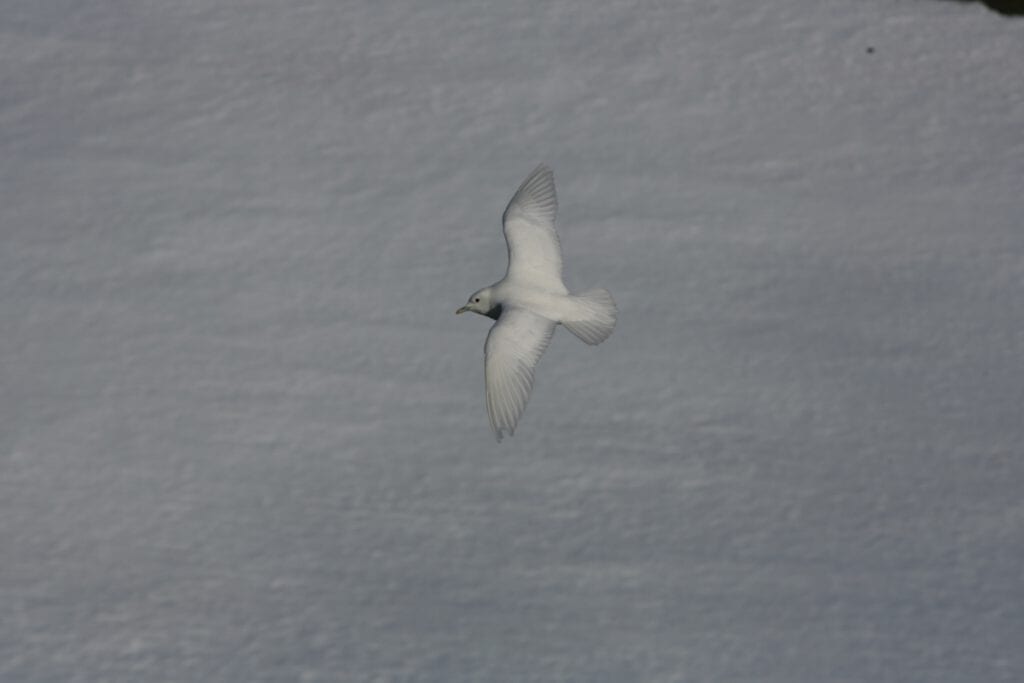Low genetic variety in ivory gulls
The ivory gull (Pagophila eburnea) is an ice-dependent seabird species living in the high Arctic. It is capable of flying thousands of kilometers, either looking for food or migrating to and from its wintering areas. In this study from 2015, researchers take a genetic approach to examining the population structure and spatial distribution pattern of the ivory gull, as well as exploring the roles of natal and breeding dispersal.
Natural habitats are changing as a consequence of global warming. Species may cope with rapid habitat changes by distribution shifts or adaptation to new conditions. A common feature of these responses is that they depend on how the process of dispersal connects populations, both demographically and genetically. Dispersal may take place at different stages of an individual’s life, e.g. both before and after reaching sexual maturity. Ivory gulls may disperse among colonies from one breeding season to the next, effectively contributing to demografic and genetic exchanges among colonies.
Read the article:
The key finding of this study is that ivory gulls display strong genetic homogeneity across their entire distribution range. This indicates that there is a steady flow of genetic material even among the most remotely located breeding grounds, which, in turn, secures that populations become, and stay, genetically homogeneous.
Contact person: Hallvard Strøm, Norwegian Polar Institute
